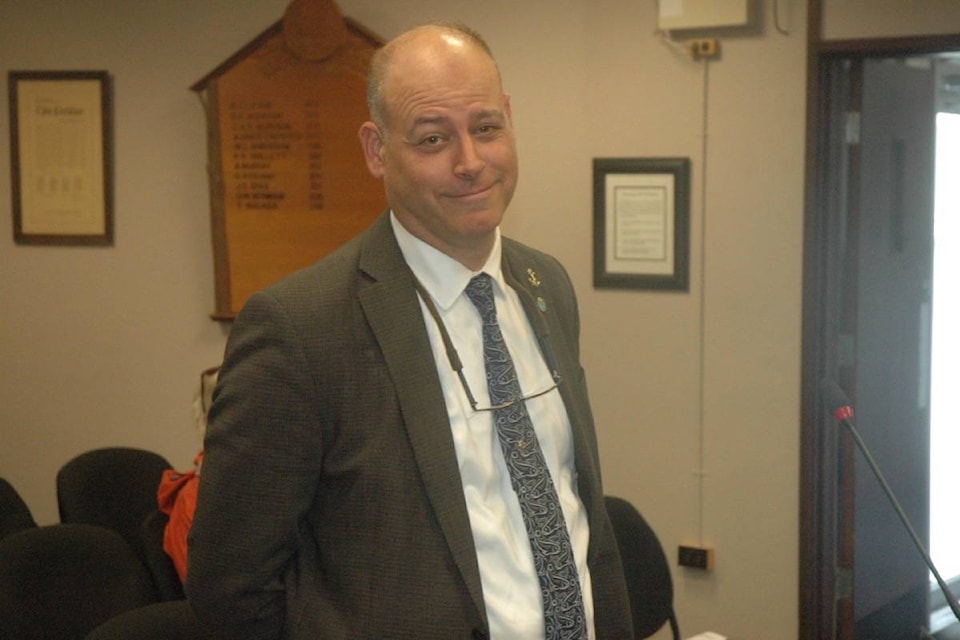A consultant will be hired to sample and test the water in Quamichan Lake in efforts to determine how best to deal with the lake’s ongoing problem with blue-green algae blooms.
North Cowichan’s council made the decision after a presentation by aquatic scientist Dr. Dave Preikshot at its meeting on July 17.
The consultant’s responsibilities will include: analyzing sediment cores to determine how much phosphorus is stored at the bottom of the lake and how much comes from external sources; installing temperature and dissolved oxygen meters in the lake; monitoring turbidity, chlorophyll and blue-green algae weekly; monthly monitoring of phosphorous and other nutrients; and the installation of zeolite and limestone stream treatments to remediate nutrients in small tributary streams and ditches.
“Management of the blue-green algae in Quamichan Lake will require primarily establishing control over the phosphorous in the lake,” Preikshot said.
“Controlling phosphorous entering the lake will be important to the long-term management of blue-green algae, and programs to begin this are already in place, like the treatment of streams and ditches with zeolite and limestone.”
RELATED STORY: NO EASY SOLUTIONS FOR QUAMICHAN LAKE’S DEADLY ALGAE
But Preikshot warned that the results from monitoring work conducted in 2018 suggest that the phosphorous in Quamichan Lake can’t be remediated with any quick or cheap approach to the problem.
There had been at least four reported dog deaths around Quamichan Lake in 2016, and all are suspected to be caused by ingesting toxic blue-green algae from the lake.
North Cowichan decided at the time to set up the Quamichan Lake Water Quality Task Force, consisting of staff and council members, along with water specialists, to study and seek solutions to the ongoing health issues related to the algae.
RELATED STORY: STRATEGIES TO FIX TOXIC ALGAE PROBLEM IN QUAMICHAN LAKE TO BE CONSIDERED
The task force concluded the nutrients that are causing the algae outbreak in the lake are coming mainly from a number of sources, including urban runoff, and runoff from nearby agricultural lands, construction areas and logging sites.
Preikshot was contracted by the municipality in 2018 to design a water quality sampling program and conduct monitoring activities in order to establish baseline conditions for several water quality parameters in the lake.
He has concluded that, while current and recent nutrient dumping in the lake are contributing to the problem, blue-green algae has been an issue in the lake since at least the 1930s.
Preikshot said the control of phosphorous in Quamichan Lake is most likely to be best achieved using one, or a combination of a number of options.
They include aeration, in which air is used to oxidize and dissolve organic materials like algae blooms, chemical treatments, flushing the lake with stored and/or diverted water, mitigating in-flowing water using zeolite and limestone in creek beds, and dredging the bottom of the lake.
Preikshot said that experience in other watersheds suggests that successful mitigation of phosphorous in Quamichan Lake will require the development of a multi-year plan.
RELATED STORY: NEW ROWING CENTRE MAY LEAD TO SOLUTIONS TO QUAMICHAN LAKE’S ALGAE PROBLEM
“It will also require the commitment of significant financial and human resources to mitigation and monitoring work,” he said.
“It might be a good idea to partner with federal and provincial agencies to offset financial and personnel costs. As well, the development of a program to control phosphorous input to the lake by working with the agricultural community should be considered.”
Preikshot said while the algae in the lake is not a municipal issue, but mostly a provincial one, North Cowichan should be commended for its efforts to deal with the problem.
“You have gone above and beyond on this issue,” he told council.
Coun. Rosalie Sawrie asked how much North Cowichan has in its budget to spend on the project.
CAO Ted Swabey said $50,000 is currently available and other funds can be allocated if necessary from the 2019 budget.
“We’ll also soon be in the next budget season just as these studies begin, so that’s perfect timing,” he said.
Council also decided that a motion to establish a Quamichan Lake Water Quality Management Committee, for the purposes of considering and implementing some of the longer-term recommendations outlined by Preikshot, be referred until after council has finished re-evaluating its committee structure.
robert.barron@cowichanvalleycitizen.com
Like us on Facebook and follow us on Twitter
